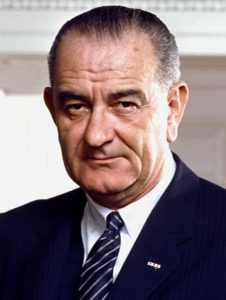What is the True Meaning of Memorial Day?
The unofficial start of the summer vacation season? A day off work and school? An excuse to host or attend a picnic to scarf burgers, dogs and beer? A reason to wave an American flag as a means to show patriotism if only for a few minutes?
No, I’m not trying to guilt you into feeling bad about observing Memorial Day in a celebratory manner. I’m just attempting to remind you about its origins as a day to mourn and memorialize all those men and women who have died in the service of their country.

By all means, attend a parade, go to a barbecue, enjoy a day at the beach, but please take a few minutes this Memorial Day to visit a military cemetery to ponder, thank and remember those who made the ultimate sacrifice.
Memorial Day actually began as something called Decoration Day and was centered around remembering the hundreds of thousands of Americans who perished during the Civil War.
 People in local communities, both North and South, would visit the grave sites of the fallen and “decorate” them, mostly with flowers, as a way to thank them for their service and sacrifices and as a means to memorialize their memories. As early as 1865, the federal government called for national ceremonies to commemorate the Union war dead while Southern ceremonies took place the same year.
People in local communities, both North and South, would visit the grave sites of the fallen and “decorate” them, mostly with flowers, as a way to thank them for their service and sacrifices and as a means to memorialize their memories. As early as 1865, the federal government called for national ceremonies to commemorate the Union war dead while Southern ceremonies took place the same year.
Then, in 1868, Decoration Day was declared by General John Logan of the Grand Army of the Republic, with the Union and Confederate observances occurring on different days. Prior to becoming a federal holiday, Decoration Day was celebrated by the states with Michigan being the first to officially observe the day in 1871 with every northern state joining by 1890.
Eventually, the Southern and Northern observances merged and Decoration Day was celebrated on May 30th from 1868 until 1970. Of course, over the years, different locations have claimed to be the “birthplace” of Memorial Day, to include Boalsburg, PA and Waterloo, NY. But does it really matter? It’s much more important, in my mind, that we, as a nation, take a few minutes from our busy lives to remember the fallen rather than to argue about where the holiday originated.
 By the late 1960s, as the Vietnam War raged, a federal law was passed making Memorial Day a national holiday in 1967 under President Lyndon Johnson. That same law moved the date of the holiday from May 30th to the last Monday in May to facilitate a convenient three-day weekend, but it didn’t go into effect until 1971. And since that year, it has come to mark the beginning of summer for most of us, rather than a day to memorialize our lost service men and women.
By the late 1960s, as the Vietnam War raged, a federal law was passed making Memorial Day a national holiday in 1967 under President Lyndon Johnson. That same law moved the date of the holiday from May 30th to the last Monday in May to facilitate a convenient three-day weekend, but it didn’t go into effect until 1971. And since that year, it has come to mark the beginning of summer for most of us, rather than a day to memorialize our lost service men and women.
Memorial Day took on renewed significance in the wake of 9/11. However, that new-found attention was short-lived and took place mostly in sport venues across the country. Once again, the day is confused with Veteran’s Day (which celebrates the service of ALL U.S. veterans) and even Labor Day (which is a worker’s holiday that marks the unofficial end of summer).
As a veteran myself who served in Desert Storm, perhaps I am a bit more sensitive to how Memorial Day has become nothing more than a day off for most Americans. Maybe I should just go on about my business and simply continue to volunteer at the local military cemetery, but as I approach yet another Memorial Day, I find myself becoming more melancholy and even a little bitter (perhaps I’m becoming a grumpy old man).
So please, this Memorial Day explain the significance of the day to your children and/or grandchildren and let them know of the sacrifices made by the 1.3 million Americans who died in service to their country over the course of its existence.
Steve Tinker, SSG, United States Army, 1988-1992
You must be logged in to post a comment.